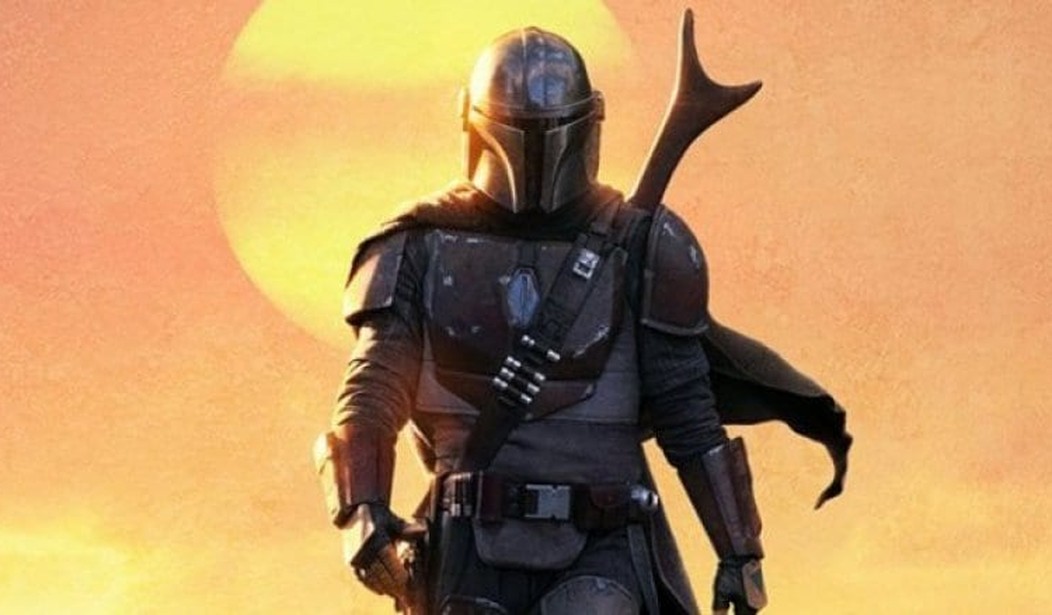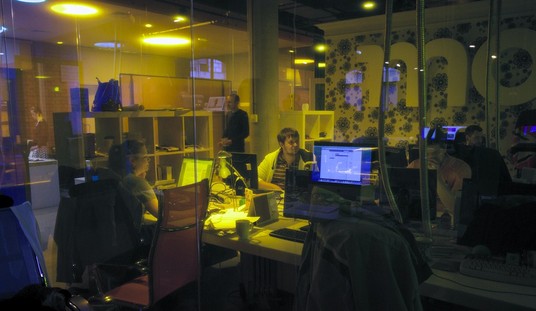The Star Wars sequel trilogy excited and then disappointed millions of fans. When George Lucas envisioned nine episodes with the original film trilogy smack dab in the middle, his original vision likely had very little to do with A Force Awakens (2015), The Last Jedi (2017), or The Rise of Skywalker (2019). Star Wars fans love to mock the prequel trilogy, but at least The Phantom Menace, Attack of the Clones, and Revenge of the Sith made sense as precursors to the original trilogy. The sequel trilogy, by contrast, paid shallow homage to the original trilogy while dismantling many of the aspects that made it great.
In this context, The Mandalorian isn’t just a breath of fresh air — it’s an example of what the sequel trilogy should have been. In some ways, The Mandalorian fulfills the broken promises of the sequel trilogy.
You see, Episodes VII, VIII, and IX were not supposed to be just your average run-of-the-mill space opera. They were supposed to be the epic climax of the Skywalker Saga, a story with internal consistency, fascinating characters, and a redemptive moral arc.
The original Star Wars introduced the iconic hero Luke Skywalker (Mark Hamill), the menacing villain Darth Vader (voiced by James Earl Jones), the rebel leader Princess Leia Organa (Carrie Fisher), and the smuggler pilot Han Solo (Harrison Ford). Obi-Wan Kenobi (Alec Guinness), a Jedi master, trains Luke, who saves the rebel alliance by blowing up the Death Star.
This iconic film spawned a fantastic trilogy, with The Empire Strikes Back unleashing the ultimate spoiler reveal: Darth Vader is Luke’s father! Return of the Jedi gave the films a satisfying conclusion.
The prequel trilogy fleshed out the backstory of this epic clash, giving new shape to the Jedi Order, Obi-Wan Kenobi, Anakin Skywalker (who would become Darth Vader), and the ultimate villain, Darth Sidious (who would become the Emperor). While the prequels had their fair share of weak moments — who can forget the horrific comic relief of Jar-Jar Binks or the absolutely awful dialogue of Anakin’s romance with Padme? — they did a good job filling in the backstory of the original trilogy and telling a tragic story to complement the happy ending of the origina films.
It would have been extremely difficult for the sequel trilogy to do the same thing, only going forward. For one thing, Return of the Jedi had a very satisfying conclusion: the evil Empire had been crushed, the Jedi restored, and the evil Sith destroyed, once and for all.
So, in The Force Awakens, J.J. Abrams started with a whole new cast of characters, brought in an evil force like the Empire, and attempted to reboot the original Star Wars movie. He added a few interesting elements, like a stormtrooper who rebels, but he mostly rehashed the familiar story, down to the major plot where a plucky hero has to blow up a massive weapon that destroys whole planets.
This gave Star Wars fans superficial satisfaction, the same kind of superficial satisfaction they would find in the other two sequel trilogy films. What made the satisfaction superficial?
For one thing, while Luke Skywalker was arguably overpowered, he made his fair share of mistakes and had very human weaknesses. The strong female character Abrams created to fulfill Luke’s role, Rey (Daisy Ridley), appeared to have few-to-no weaknesses. Heck, she barely needed any training, throughout the whole trilogy!
Perhaps most importantly, while the first Star Wars movie (now called A New Hope) rightly built up the threat of the Death Star and the evil of Darth Vader by building toward Alderaan — it was Leia’s home planet, Luke and Obi-Wan planned to travel there, and Obi-Wan feels the destruction of Alderaan in the Force — The Force Awakens did not connect the audience with the New Republic planets that The First Order destroys. While A New Hope rightly builds to the massive reveal of Alderaan’s destruction so the audience feels a sense of loss, The Force Awakens treats the central moral evil of The First Order as an afterthought.
The Last Jedi and The Rise of Skywalker only compounded the mistakes of The Force Awakens. The sequel trilogy veered off course, with the second film easily killing off the mysterious key villain, Supreme Leader Snoke, and the third film attempting to brush him away. In fact, the third film treats the entire First Order as an afterthought — even though The First Order was the major evil threat throughout the first two movies!
The sequel trilogy also undermined the logic of the first six movies in important ways. The Last Jedi presented Luke as a disheartened failure, disappointing fans and causing them to question the original films. The Last Jedi also completely dismissed the key mysteries set up in The Force Awakens, only for The Rise of Skywalker to provide weak answers for those mysteries. The Last Jedi also changed the laws of Star Wars physics by turning lightspeed into a weapon. If lightspeed could have been a weapon, every space battle in the entire saga is essentially pointless because small fighters could have just used lightspeed to destroy larger ships.
Worst of all, The Rise of Skywalker effectively dismantles the heroic ending of The Return of the Jedi by bringing back Darth Sidious. Throughout the prequels, characters describe Anakin Skywalker as “The Chosen One,” the man whose destiny it is to destroy the Sith. In Return of the Jedi, Anakin does destroy the Sith — by killing Darth Sidious. Yet if Darth Sidious survives, then Anakin is not the Chosen One and the first six movies make less sense.
So, what’s so great about The Mandalorian? Unlike the sequel trilogy, The Mandalorian builds on the previous movies and TV shows (including Clone Wars and Rebels) to tell a unique story that both fits in the broader narrative and has exciting features to add.
The Mandalorian centers on Din Djarin (Pedro Pascal), a bounty hunter and a member of a Mandalorian cult that encourages its members never to take their helmets off. Djarin, whom most characters simply refer to as “Mando,” takes on a mission to capture a creature of the same kind as Jedi Master Yoda, but he ends up saving “Baby Yoda” instead of turning him over.
The Mandalorian follows a Western style, as Mando goes on various quests with Baby Yoda. His quests bring him closer to the mystery of Baby Yoda’s identity and introduce him to an increasing cast of characters. Star Wars fans will find many of their favorites on Mando’s travels.
The Star Wars sequels promised to build the Star Wars universe, introduce new characters, and honor the movies and TV shows that came before. Instead, the sequels undermined much of what made Star Wars great.
The Mandalorian, by contrast, builds on what came before. Of course, the TV show isn’t competing with the earlier trilogies, but it also didn’t undermine the first six movies.
While the sequel trilogy has soured many fans on the new Disney era, The Mandalorian is reminding them of what they hoped for when The First Awakens originally dropped. Who knows? Perhaps The Mandalorian will even provide a way for Star Wars to move past the horrible sequel trilogy.
Tyler O’Neil is the author of Making Hate Pay: The Corruption of the Southern Poverty Law Center. Follow him on Twitter at @Tyler2ONeil.









